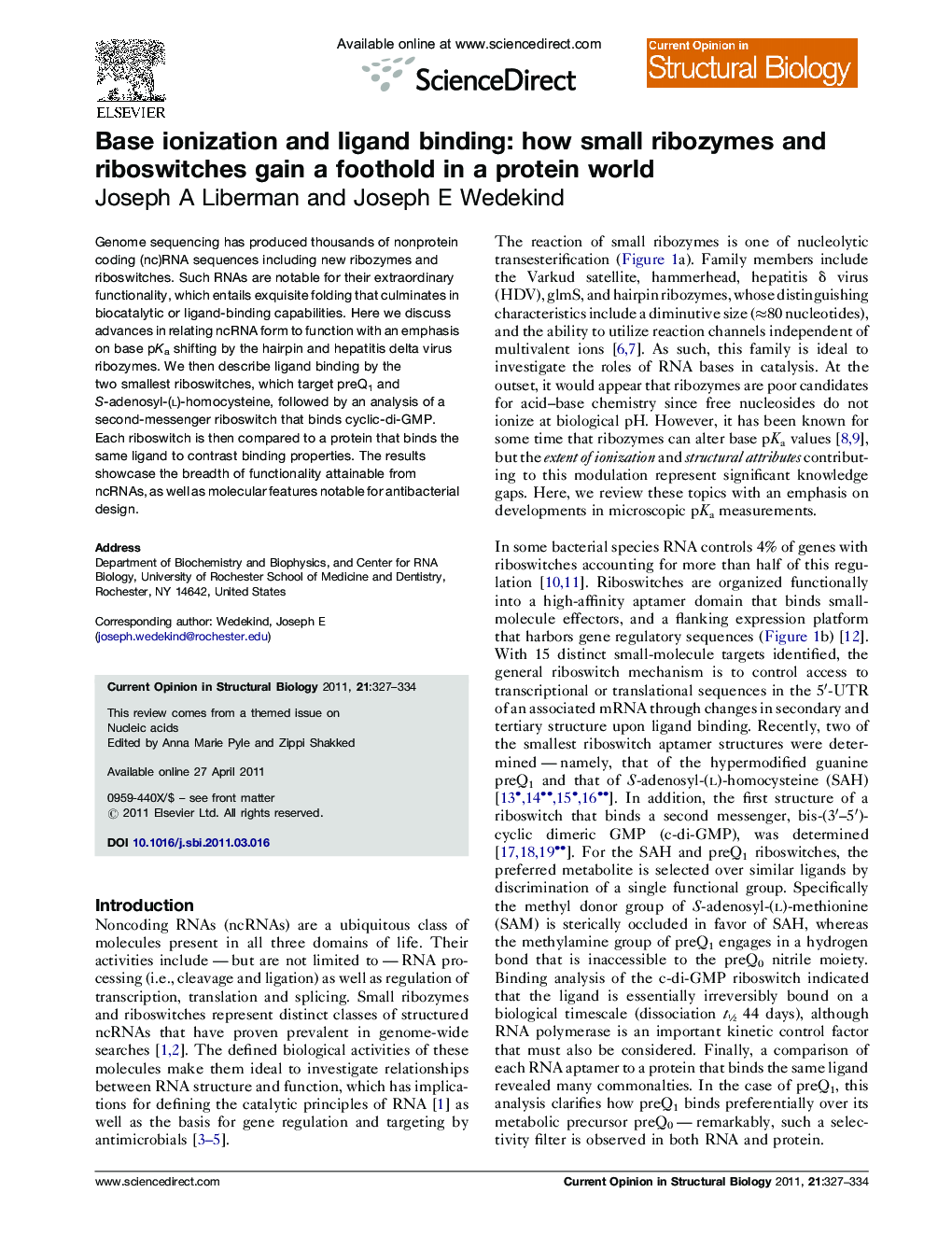| Article ID | Journal | Published Year | Pages | File Type |
|---|---|---|---|---|
| 1979149 | Current Opinion in Structural Biology | 2011 | 8 Pages |
Genome sequencing has produced thousands of nonprotein coding (nc)RNA sequences including new ribozymes and riboswitches. Such RNAs are notable for their extraordinary functionality, which entails exquisite folding that culminates in biocatalytic or ligand-binding capabilities. Here we discuss advances in relating ncRNA form to function with an emphasis on base pKa shifting by the hairpin and hepatitis delta virus ribozymes. We then describe ligand binding by the two smallest riboswitches, which target preQ1 and S-adenosyl-(l)-homocysteine, followed by an analysis of a second-messenger riboswitch that binds cyclic-di-GMP. Each riboswitch is then compared to a protein that binds the same ligand to contrast binding properties. The results showcase the breadth of functionality attainable from ncRNAs, as well as molecular features notable for antibacterial design.
► We discuss advances in relating non-coding RNA structure to function. ► Emphasis is on base-pKa shifting by the hairpin and hepatitis δ virus ribozymes. ► Details follow for metabolite binding by the smallest riboswitches, preQ1 and SAH. ► Second-messenger binding by the cyclic-di-GMP is also described. ► Each riboswitch is compared to a protein that binds the same ligand. ► Results suggest the breadth of ncRNA function arises via untold structural diversity.
